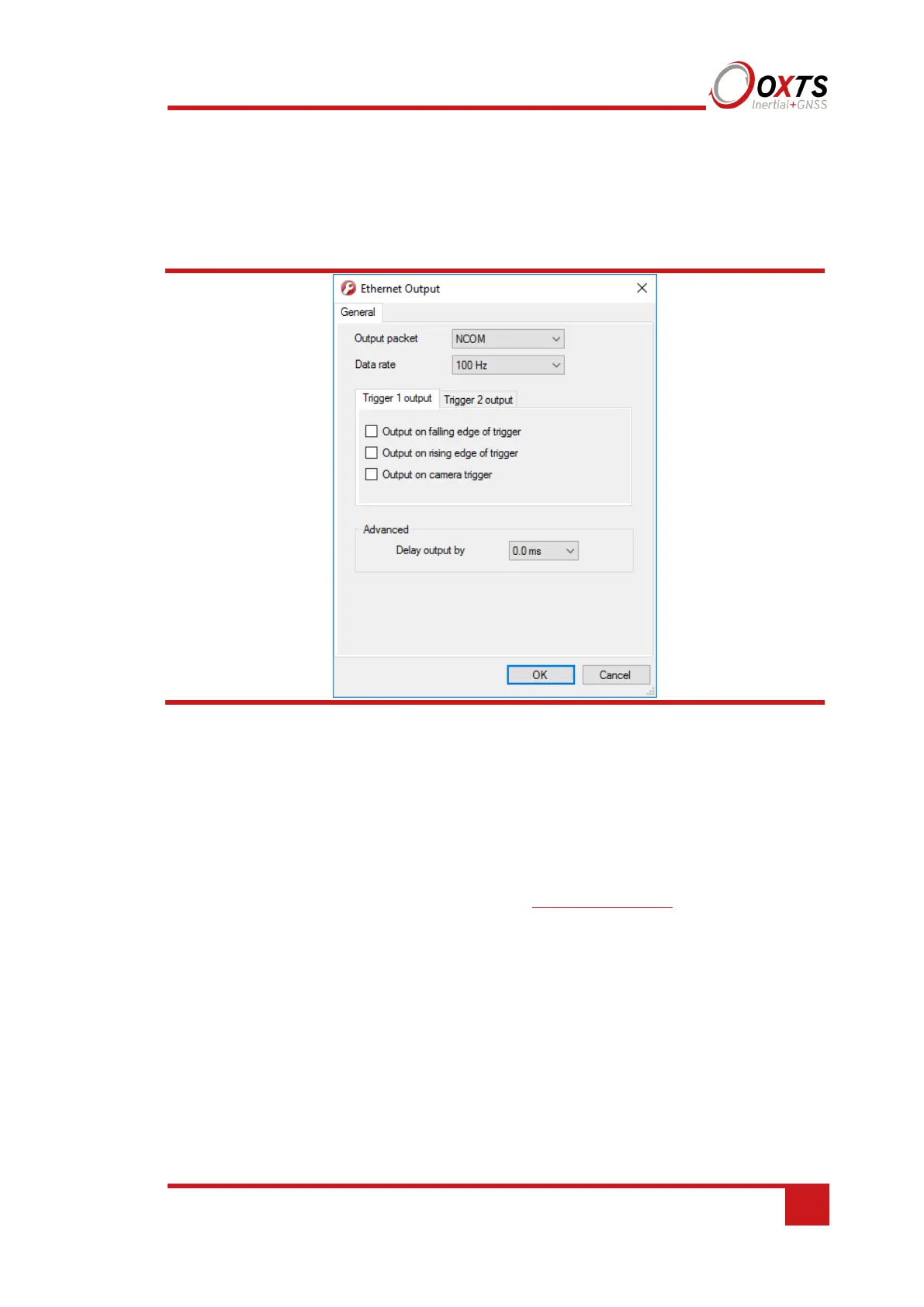87
The Ethernet output of the RT can be configured for different data rates and delays.
Figure 39 shows the Ethernet Output window.
Figure 39. NAVconfig Ethernet output properties window
The Ethernet Output can either output NCOM or MCOM, or be disabled by using the
Output Packet drop-down list. When NCOM or MCOM is selected, the Data rate can
be selected by using the drop-down list.
The RT can output Ethernet messages when an event (rising or falling edge) is input on
the event input pin. It can also output Ethernet messages when the distance output is
configured in camera output mode. This mode is enabled automatically by selecting a
distance output of less than 1 ppm—contact support@oxts.com for details. These
messages are interpolated to the time when the event occurred and may be output up to
30 ms late and out of order compared to the normal messages. It is essential to enable
these options if the events have a rate higher than 1 Hz, otherwise the output cannot
communicate all of the events and some will be lost.
The output delay in Advanced should only be used with the RT-Range when there are
multiple targets. It will delay the Ethernet broadcast from the RT by a number of
milliseconds so the wireless LAN in the RT-Range can transmit each RT’s messages at
different time slots. The timing is not guaranteed when using this option and it should
not be used in other applications.
